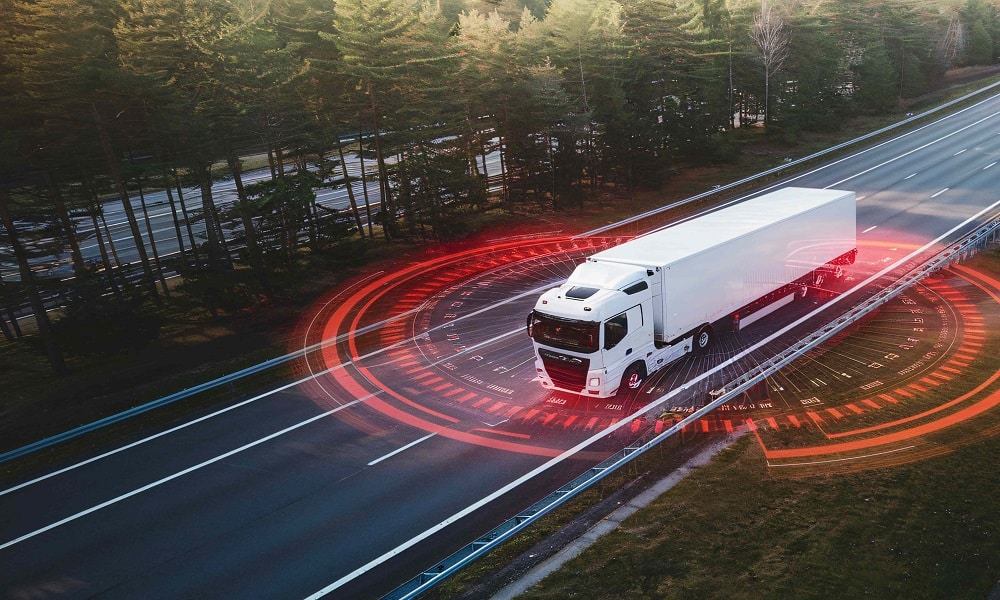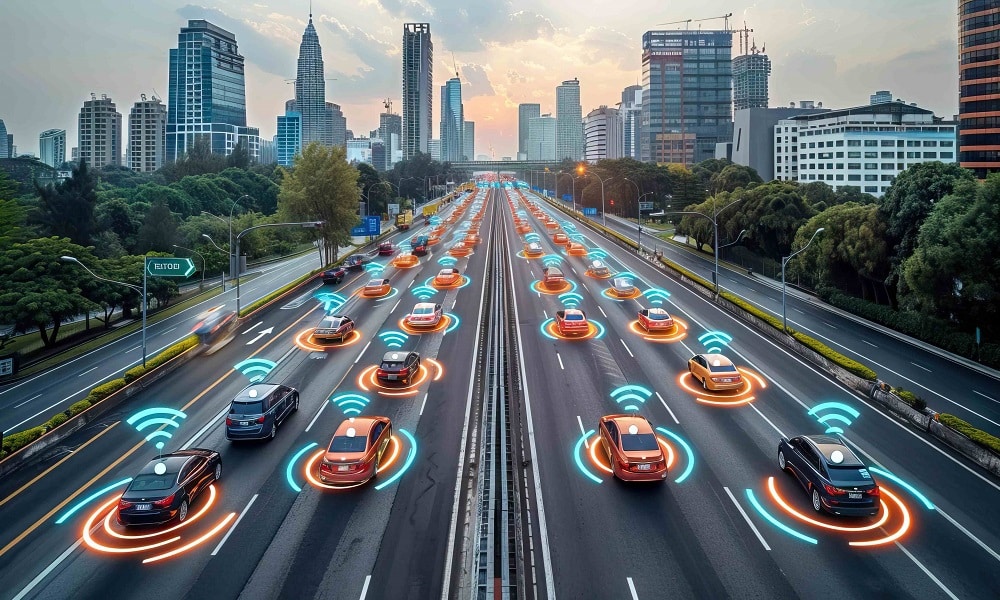There was a time when driverless cars were a work of fiction, but now, they’re a reality. It’s estimated that there’ll be about 3.5 million of these types of vehicles on the road in 2025, and by 2035, give or take, 40% of cars in the UK could be self-driving. [1] [2]
But as businesses continually adopt this tech, a question comes to the fore. What are the legal implications of driverless car accidents for businesses? This guide is going to take you through the ins and outs of these incidents and the next steps if you find yourself caught up in one.
Liability Allocation
One of the biggest legal headaches with driverless cars is figuring out who’s at fault in an accident. With traditional cars, the blame typically falls on the driver. But with autonomous vehicles, there’s a mix of players—manufacturers, software developers, owners, and even third-party service providers.
For businesses, this uncertainty can be risky. Without clear laws, you might face lawsuits even if you weren’t directly involved in the accident. Say your driverless van failed to stop at a red light due to a software bug. The injured party might sue your business for damages, even though the software glitch wasn’t your fault.
To protect your business, you’ve got to understand your contracts with manufacturers and software providers. Check if they include liability clauses or indemnities. Also, invest in specialized insurance that covers such unique risks.
To get these aspects right, consider involving experts who are well-versed in providing legal help for self-driving cars. These professionals have been in the industry for a while and know how to go about these cases. Their expertise can ensure you’re fully compliant with current laws and ready for any legal challenges that may arise.
Product Liability
Driverless cars are essentially computers on wheels. If something goes wrong—like a faulty sensor, a glitchy algorithm, or a hardware failure—product liability comes into play.
Take this scenario: A company uses driverless cars for transporting goods. One day, a car misjudges a pedestrian crossing and causes an injury. Investigators find that a sensor failed to detect the person. In this case, the manufacturer of the sensor might be held liable under product liability laws.
But here’s the catch—businesses can also face claims if they didn’t maintain the vehicle properly. Say you’re using an autonomous fleet, and one of the cars crashes because you missed a required software update. In this situation, your business could share the blame.
The lesson here? Keep your fleet well-maintained and up-to-date with software patches. Work with reliable manufacturers who have a track record of addressing safety concerns quickly. And again, review contracts to ensure the manufacturer or developer takes responsibility for technical failures.
Regulatory Compliance
Governments around the world are trying to catch up with driverless car technology. Matter of fact, about 60% of stakeholders agree that regulation is the biggest impediment to growth in this sector. For businesses, this means staying compliant can be tricky, especially if you operate in multiple regions. [3]
For instance, one country might require specific safety certifications for autonomous vehicles, while another might demand detailed data reporting on every trip. If you’re running a fleet of driverless vehicles, missing any of these requirements could result in fines or even bans.
The best approach? Regularly audit your fleet to ensure it meets all regional requirements. Assign someone in your team to monitor regulatory changes, especially in areas where your vehicles operate. Partnering with manufacturers who prioritize compliance can also reduce your legal risks.
Insurance Challenges
Traditionally, insurance covers human error, which accounts for most accidents. But with autonomous vehicles, the focus shifts to things like software failures and cyber risks.
Say your business relies on autonomous trucks to deliver goods. If one of those trucks causes an accident due to a GPS malfunction, will your traditional insurance cover it? Probably not. Standard policies aren’t designed to handle these kinds of risks.
And it’s not just about accidents. What if someone hacks into your driverless fleet and reroutes a vehicle? Or worse, uses it for malicious purposes? Businesses now need insurance policies that cover these emerging threats. Be prepared to pay higher premiums, though. Autonomous tech may reduce accidents, but when things go wrong, the claims can be huge.
Data Privacy and Cybersecurity
Driverless cars collect enormous amounts of data—routes, passenger habits, vehicle performance, and even environmental conditions. For businesses using autonomous vehicles, this data can help improve operations. But it’s also a legal landmine if mishandled.
Many regions have strict data protection laws, like GDPR in Europe, that impose heavy fines for mishandling personal data. Even if your business operates in areas with looser regulations, negligence in securing data could damage your reputation and expose you to legal action.
Start by investing in cybersecurity systems worth their weight in gold. Encrypt the data your vehicles collect and ensure it’s stored securely. Also, limit who in your organization has access to sensitive information. Regularly audit your systems for vulnerabilities, and work with your technology partners to prioritize cybersecurity.

Workplace Safety
Imagine a delivery business where employees load goods into driverless vans. If an autonomous van malfunctions and causes an injury, your business could face a workplace safety claim. Even if the incident was due to a manufacturing defect, you might still be held partially responsible for not ensuring a safe working environment.
To stay on the safe side, treat driverless vehicles like any other workplace tool. Provide employees with clear training on how to interact with the vehicles safely. Create protocols for situations like vehicle malfunctions or unexpected hazards.
Also, review your workplace insurance to confirm it covers accidents involving autonomous vehicles. If your vehicles transport passengers, think about additional coverage to protect both employees and customers.
Jurisdictional Complexities
If your business operates across regions or countries, you’ll quickly encounter jurisdictional complexities. Each area may have its own set of laws governing autonomous vehicles, and they don’t always align.
For example, one state might require driverless cars to have a licensed operator on standby, while another might allow fully autonomous operations. If your business operates in both regions, failing to comply with either could land you in legal trouble.
To avoid this, map out the legal landscape wherever your vehicles operate. Stay updated on the regulations in every region and tailor your operations to comply. For cross-border operations, consult legal experts familiar with each jurisdiction’s laws.
Closing Thoughts
Driverless cars come with many benefits. However, you’ve got to be prepared for the possibility of accidents as this tech evolves. With the legal end covered, you’ll be in a better place to handle these liabilities, should they arise.
Sources
1. “United States Autonomous Vehicles Research Report 2024: A $78.63 Billion Market by 2030 Driven by Advancements in Linked Car Technology”, Source: https://finance.yahoo.com/news/united-states-autonomous-vehicles-research-234500348.html
2. “Location data can help deliver the safe rollout of autonomous vehicles”, Source: https://www.gov.uk/government/news/location-data-can-help-deliver-the-safe-rollout-of-autonomous-vehicles
3. “Autonomous vehicles moving forward: Perspectives from industry leaders”, Source: https://www.mckinsey.com/features/mckinsey-center-for-future-mobility/our-insights/autonomous-vehicles-moving-forward-perspectives-from-industry-leaders


